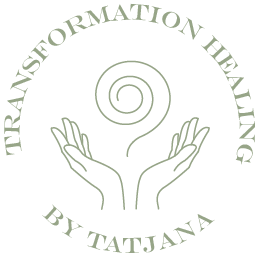Author: Antun Cerovečki
When we look at our body or its reflection in the mirror, it appears static. However, if we could dive beneath the skin and bones, deep into the micro-universe of the human body, we would witness continuous dynamic processes—nutrient extraction from food, muscle and fascia contractions, the flow of blood and other fluids, pulsations and electrical impulses racing along communication highways. Beyond all the biological and chemical processes, our body is also a reservoir of an endless stream of emotions and thoughts that almost never come to rest. Nothing in our system sleeps; complex communication takes place on all levels, regardless of our awareness of it.
While biology and chemistry study the complexity of our system in detail and explore how our cells function, psychology and epigenetics investigate why our cells function the way they do. In other words, they examine the interaction between our cells and the environment—our response to that environment. Today we know that beneath the biochemical complexity of the system lie principles (or beliefs) that govern how our cells respond to the world around us. The interpretation of these messages coming from our cells is the subject of this article.
If you listen to your body when it whispers, you won’t have to hear it scream.
Listening In
We all hear our body. We know when we’re hungry, thirsty, in pain, or sleepy. We know when we want sex, when something makes us happy, angry, or sad. When we feel discomfort or yearning in our body, we do whatever we can to satisfy that desire and restore our inner peace. When it comes to basic needs, this is relatively straightforward. When we’re hungry, we eat. When we’re cold, we dress more warmly. When we’re tired, we sleep—mostly. But restoring inner peace becomes more demanding when emotions are involved.
The reason is that we unconsciously follow the principle of satisfying discomfort or longing from the outside. Take this example: a colleague accuses you of being careless or inattentive, and you begin to feel anger and defend your actions. In other words, you try to prove it’s not your fault and that you’re a victim of circumstances and/or their words. This approach may work occasionally, but in the long run, its effectiveness is questionable.
So the real question is not what we hear as messages from the body, but how we interpret them. And that interpretation is based on our attitude—our beliefs about ourselves and the world.
Forming and Living Beliefs
Since our beliefs are mostly unconscious (or become unconscious during communication), it’s incredibly challenging to become aware of them overnight. Paradoxically, in order to become conscious of our beliefs, we need interaction with other people and unpleasant situations. Most of our beliefs were formed early on and were slowly reinforced through adulthood, becoming deeply ingrained as our self-concept. They become self-fulfilling prophecies that follow us through life. Beliefs are nothing more than the result of our adaptation to the environment. This crystallized adaptation, in physical form, can even be seen in the shape of our body. Here we also find the reasons why some bodies are extremely thin, others carry extra weight, and others are highly muscular.
The mode of adaptation—our response to past situations—remains stored in our nervous system as an impulse reaction. This sentence holds the key to recognizing the quality of a response. When we react impulsively to a perceived threat, our nervous system tries to protect us. It does so through well-known reactions: fight, flight, freeze, and fawn—which we translate into words. An impulsive reaction instantly activates and releases a large amount of energy, which is unpleasant if we haven’t learned how to channel it.
Now imagine the previous example, only more intense. Your colleague not only accuses you of negligence but does so in front of others, using humiliating words. If you have enough self-control, you might not explode, but your body will likely experience a strong reaction consistent with your most accessible survival response. For years, my own response was anger projected outward. In such moments, most of us let our nervous system take over and bring us back to safety in the way it has learned. In relationships, this leads to over-explaining, holding grudges, and emotional buildup—which is exhausting in the long term.
How to Use Unpleasant Situations for Learning
To grow from such situations, it’s important not to (remain or become) a victim of our own nervous system and emotions. The skill that helps us here is developing the inner observer. This means recognizing within us a part of our awareness that can witness and feel all comfort and discomfort, but is not overwhelmed by emotions or thoughts. Activating and training the inner observer is a skill cultivated by slowing down and turning attention inward.
What a Conversation with the Body Looks Like
After returning home from a tough day at work, withdraw to a quiet space where you can feel yourself more deeply. The echoes of the work situation will likely still be present in your body, which may prompt your mind to kick in and start generating a flood of thoughts. Try not to get attached to them. Pause within yourself and observe the situation from a distance or from above. Does it still carry the same emotional charge? If so, take a step back until you can watch it neutrally. Look at yourself, your colleague, and anyone else involved emotionally. Allow yourself to feel all the emotions—your own and your colleague’s—without judgment. Observe with curiosity, without the need to fix anything. Your interest is to understand. But first and foremost, understand with your whole body, not just the mind. Then ask: What is this situation trying to tell me about myself?
The answer will come instantly. Our body doesn’t know how to lie. Whenever we ask it a question, it will tell us the truth. To hear the answer that truly serves us, it’s important to approach the situation from a neutral position.
How Do We Know the Answer Is Right?
That’s a great question. Answers never speak about other people. They don’t tell you exactly what to do. Rather, they point in a direction rather than dictate a path. When an answer brings a sense of peace and lightness, it’s good for us.
You can apply this dialogue to various situations. Here are some questions you can ask your body:
- Is the job I’m doing good for me?
- Can I go on this trip without worry?
- Is now the right time for a new car?
- Is this food good for me?
- Should I be working more/less?
- Was I completely honest with my partner in our last argument?
The Principle of Lightness
Every time we feel relief in the body, it means something resonates. Lightness is a sensor we can follow whenever we’re unsure how to proceed or feel entangled in a complicated relationship or work project. If we dare to follow the positive excitement and ease in our life, life will start to return that energy many times over. That requires a high level of authenticity and courage, which is not always easy. However, when we do this, our heart, mind, and body align, and we feel as though they become one. Living life in this way is still a new and unfamiliar experience for most of us. But life then truly becomes magical, and our magic attracts others to choose the same for themselves. All the guidance you need on that path truly lies within. The process of discovering that treasure is called life. It’s worth the effort.
If you’re reading these words, it means you’re already on that path.
Text written by: Antun Cerovečki
Coherent body psychotherapy therapist, sound therapist, and co-founder of Prostor srca, a center for body psychotherapy.
Links: prostorsrca.com and tinyuniverseoftheheart.com

